Westminster Abbey: How the nation's coronation church has touched our lives for 1,000 years
In anticipation of The Queen’s Jubilee Year, Country Life had the opportunity to photograph the majestic interiors of Westminster Abbey, our coronation church, amid the quiet of lockdown. In the first of two articles, John Goodall explains how, in this building, events from the deep past continue to touch our lives today. Photographs by Will Pryce for the Country Life Picture Library.

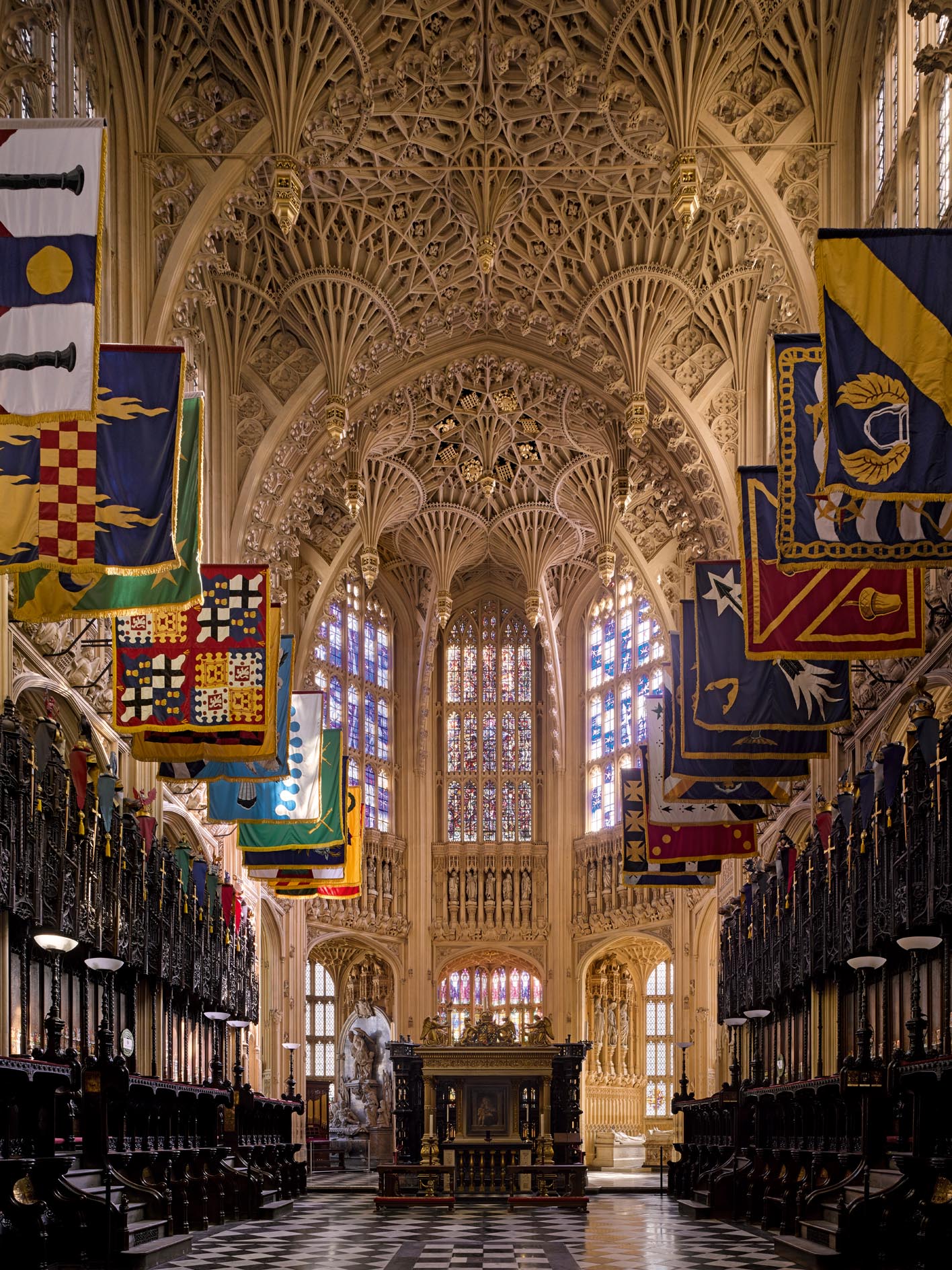
A smidgeon over 955 years ago, on Christmas Day 1066, William, Duke of Normandy was crowned King of the English in the abbey church of St Peter at Westminster. The ceremony set divine seal on his victory at the Battle of Hastings less than three months earlier, but it was an ominous affair. William was presented to his people for acclamation and when the nervous guards outside the church heard shouts in an unfamiliar language they imagined treachery and began firing houses.
[Read more: Westminster Abbey: History, power, tourism, and its status as ‘the single greatest and most eclectic museum of sculpture in the world’]
According to the chronicler Orderic Vitalis (d. 1142), in the pandemonium that ensued, William, perhaps for the only time in his life, completely lost his nerve and sat trembling uncontrollably on the throne.
The church in which William was crowned was the predecessor to the Westminster Abbey we know today (Fig 1).

In 1066, the Benedictine monastery here already claimed a long history — impossible now to substantiate — stretching back to the piety of Sæberht, King of the East Saxons, in the early 7th century. It was only very recently, however, an important institution.
According to an anonymous life of Edward ‘the Confessor’ — the king from whom William the Conqueror claimed succession — composed in the 1060s, the monastery at Westminster had previously been ‘insignificant in buildings and numbers’. Edward, however, was drawn to patronise it by his devotion and because it ‘lay hard by the famous and rich town [of London] and also was a delightful spot, surrounded with fertile lands and green fields and near the main channel of the river, which bought abundant merchandise… from the whole world’.

The Life goes on to explain that Edward set aside a tithe of all his revenue and began building ‘a noble edifice, worthy of [Peter,] the Prince of the Apostles’ as his intended burial church. The King spent part of his life in exile in Normandy, where, in the mid 11th century, a new idiom of monumental architecture inspired by Roman example was being developed. His new ‘Romanesque’ building consequently looked across the Channel for inspiration to such new churches as Jumièges. What this account does not explain is that Edward also created or enlarged a royal residence immediately beside the Abbey on the banks of the Thames, now familiar as the Palace of Westminster.
Work to Westminster Abbey was under way by 1051 and the new church was consecrated on December 28, 1065, only eight days before its royal patron died. The celebrated 11th-century narrative embroidery of the Norman Conquest known as the Bayeux Tapestry shows a workman, precariously balanced on a ladder, affixing a weathercock to the building, completing it just in time to receive the King’s funeral procession.
Exquisite houses, the beauty of Nature, and how to get the most from your life, straight to your inbox.
Westminster Abbey now assumed an important role in making a political reality of the Norman cultural imperialism that its architecture foreshadowed. After Edward’s death, Harold Godwinson famously claimed the English throne. He was crowned at Westminster on the day of the dead King’s funeral. When William had proved the legitimacy of his own rival claim on the battlefield at Hastings, therefore, he pointedly chose to be crowned in the same place. England had, quite unlooked for, acquired a coronation church (although its status as such was only expressed by force of royal charter in 1100).
This privilege of coronation was only one of a quite exceptional number that the abbots of Westminster managed to secure for their monastery in the century after the Conquest and the institution grew powerful and rich. It was greatly to the Abbey’s advantage, of course, that it stood next to the Palace of Westminster, which was concurrently establishing itself by stages as the settled home of the royal administration.

For all it had achieved, however, the Abbey lacked one thing: a devotional cult appropriate to its status. It eventually found one, however, in the body of Edward. He enjoyed a good posthumous reputation — first recounted in the anonymous Life of the 1060s — which was easily developed to advantage. Crucially, Edward was also the dynastic lynchpin that connected every late-medieval monarch to the line of England’s Anglo-Saxon kings, so he was an appealing figure to celebrate.
The most familiar path to medieval sanctity was popular interest, but this seems to have been lacking at Westminster, so the Abbey used its standing and connections to effect the change. In 1161, Edward the Confessor — the sobriquet referring to his exposition of Christian faith by the example of his life, rather than by martyrdom — became the first English saint to be directly canonised by the Pope. On October 13, 1163 — the anniversary of the eve of the Battle of Hastings — the King’s body was reverently exhumed from its sepulchre (which was preserved empty as a focus of devotion).
Then, in a manner that was becoming fashionable in major churches across Western Christendom, it was placed in a container or feretory that was elevated behind the high altar, from which position it commanded the interior of the building. Here, two generations later, the Abbey’s royal saint inspired the devotion of Henry III with far-reaching consequences.

Henry III succeeded to the throne in 1216 at the age of nine and was initially crowned in the midst of civil war at Gloucester Abbey, now the cathedral. Four years later, in 1220, he was crowned again at Westminster on Whitsun, at which time the religious landscape of the kingdom — indeed of Western Christendom at large — was being transformed by the canons of the recent church council in Rome, Lateran IV. Two weeks before his coronation, the foundation stone of Salisbury Cathedral was laid and some months later, on July 7, the King attended the translation of St Thomas Becket to his splendid new shrine at Canterbury. This was also the year of the canonisation of St Hugh of Lincoln and, at Westminster, the start of work to a new Lady Chapel at the eastern extreme of the Romanesque church. What happened next was bound up with these wider changes.
Henry III came of age in 1228, but it was at about the time of his marriage to Eleanor of Provence in 1236 that he began to take an intense interest in his sainted royal forebear and assumed him as a patron. He also began to effect changes to Westminster Palace, which, since the loss of Normandy to the English Crown in 1204, had become the unrivalled focus of the royal administration. In 1241, Henry III renewed the Confessor’s shrine and then, in 1245, an initiative to rebuild the whole abbey church got under way with the demolition of the crossing, transepts and eastern arm of the Romanesque church. For continuity of divine service, the monastic choir was then transferred to the truncated nave, which was sealed from the elements by a timber screen. The following year, Henry III, after the manner of Edward the Confessor, nominated the Abbey as his burial place.
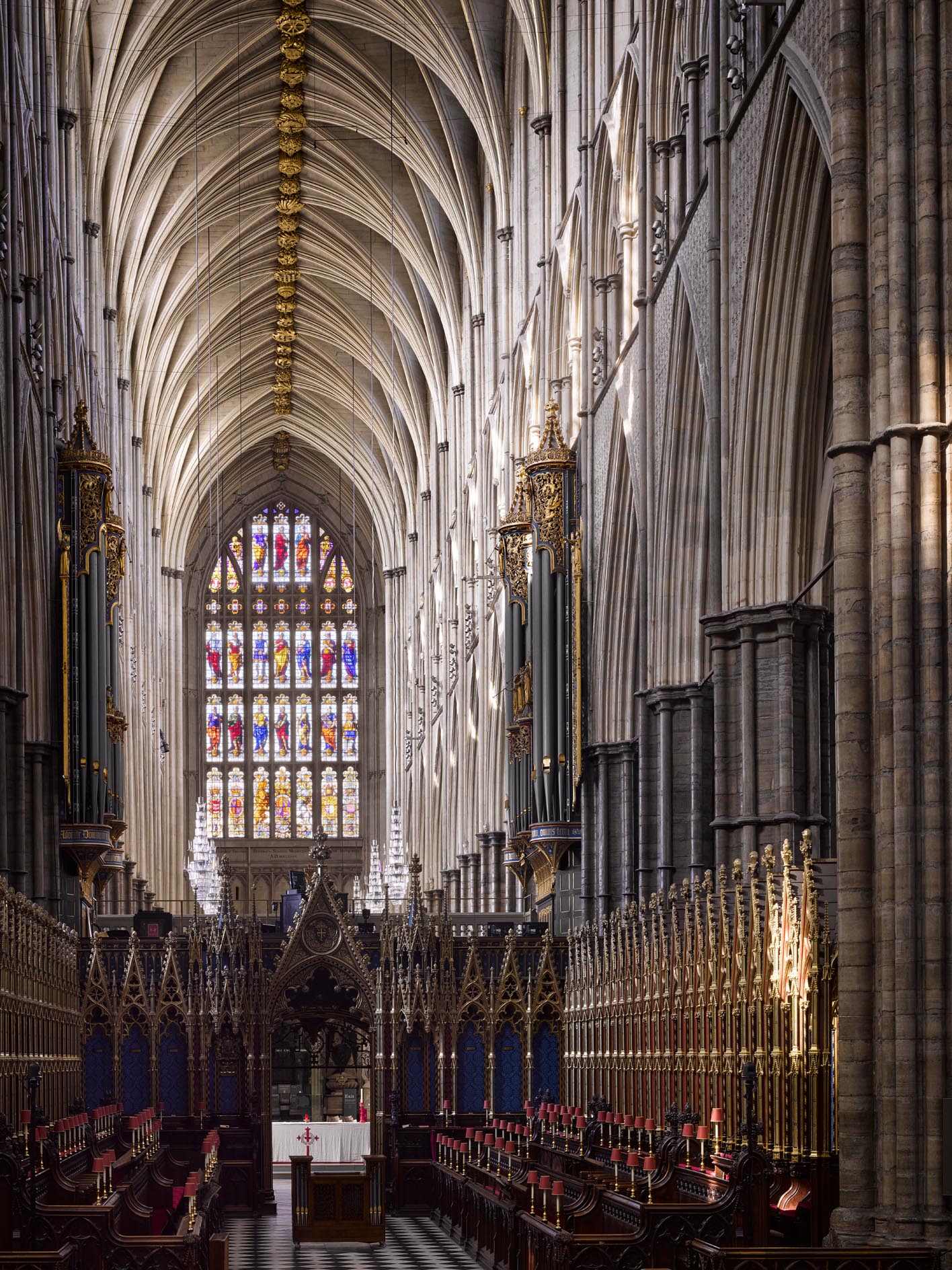
In physical terms, the plan of the new building was constrained by the need to accommodate the existing position of the cloister and new Lady Chapel (which was substantially reconstructed). There was also the demand to preserve the location of the principal fittings of the 11th-century church, including the high altar. Henry III, however, was seemingly indifferent to the cost.
Over the next 30 years, more than £41,000 was poured into rebuilding the Abbey with its eastern cloister range and chapter house. It’s hard to convey just how much money that was, particularly when extracted from England’s 13th-century economy. Salisbury Cathedral and cloister in Wiltshire, by comparison, cost about £27,000. It’s probably accurate, however, to describe Henry III’s rebuilding of the Abbey as the most ambitious single act of patronage ever undertaken by an English king, George IV’s proverbial extravagance notwithstanding.
The mason responsible for the new church was Henry of Reims, who was probably an Englishman but his name underlines a personal knowledge of ongoing work to the reconstruction of the French coronation cathedral at Reims. What Henry consequently created was a highly idiosyncratic hybrid of English and French Gothic design.
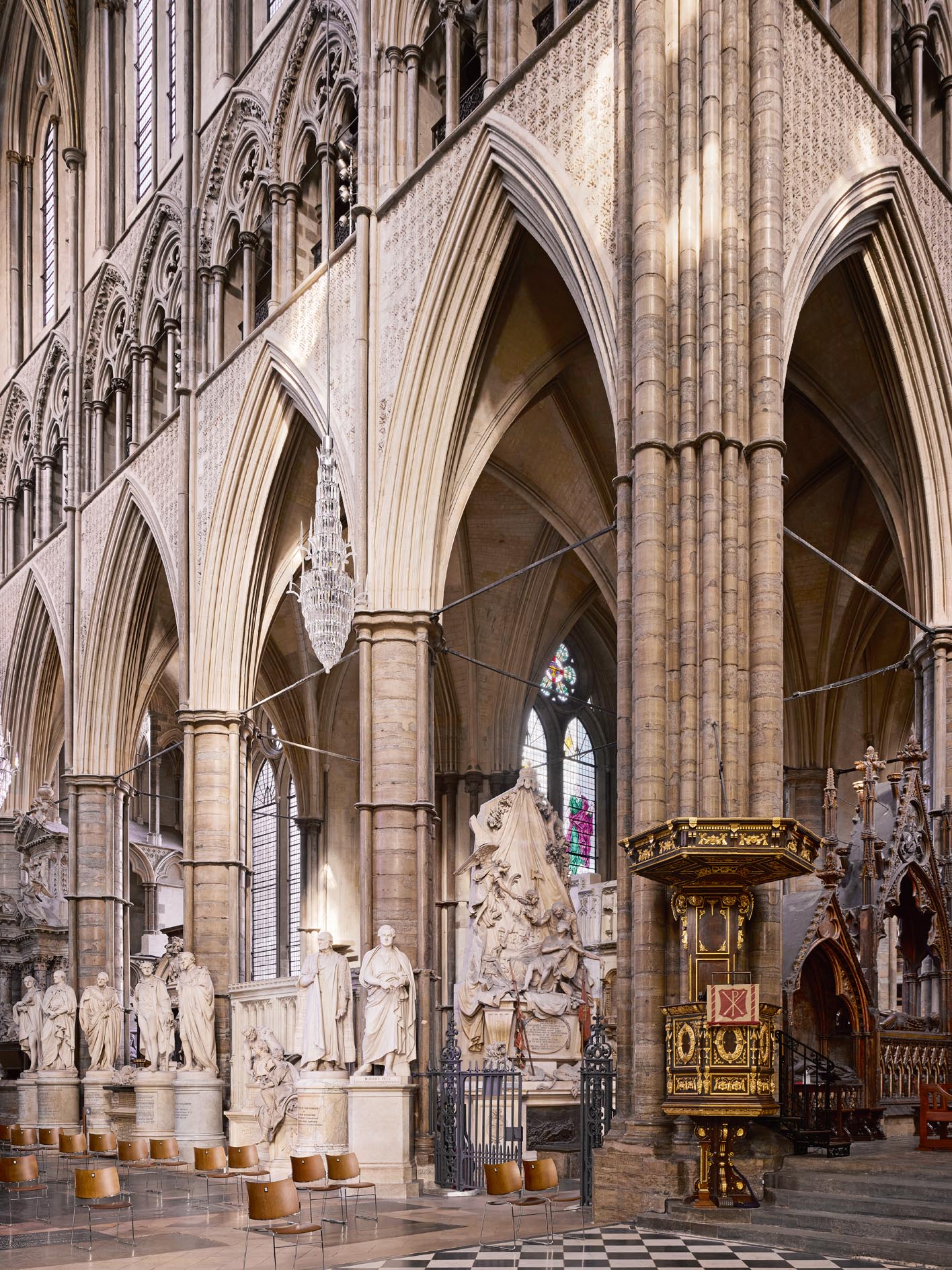
The Abbey vault stands at 102ft high, a measurement just scraping over the 100ft mark that denoted a medieval skyscraper. That is much lower than the most ambitious contemporary French buildings — the vaults of Amiens stand 139ft high — but it is taller than the high vault of any other English great church. Further emphasising this height in a French-inspired manner are the exceptionally tall arcades that rise half the height of the elevation from the floor; likewise, the complex plan of the eastern arm of the church containing the high altar.
Rather than terminate in a flat wall — a treatment favoured in England — the extreme end of the building turns by stages (Fig 3). There is also an encircling aisle with chapels radiating out beyond it. Such geometric and spatial complexities were hallmarks of French High Gothic design.
In other points, however, the aesthetics of the building are distinctively English. French masons liked to create the internal illusion that their buildings were structurally impossible. Consequently, they usually placed windows on the inner face of a wall so as to conceal the depth of its masonry. By contrast, English masons conventionally hung windows on the outer face of walls and used the structure as a surface for sculptural display. That preference explains why the walls at the Abbey are encrusted to an incredible degree with costly mouldings and carvings.
Other details characteristic of English design were the use of dark, polished Purbeck marble for the columns, creating contrasting colours of masonry. More technically, there are repeated horizontal accents to the design. These include the rib running the length of the apex of the vault. French masons delighted in vertical emphases that accentuated the extraordinary height of their buildings and this detail would have struck them as bizarre. Almost certainly as a concession to coronation ceremonies and the need to accommodate large crowds, the gallery or triforium of the building was devised on an exceptional scale. Similarly, the crossing piers are unusually slender, presumably to leave this area crucial in the crowning ceremony unencumbered.
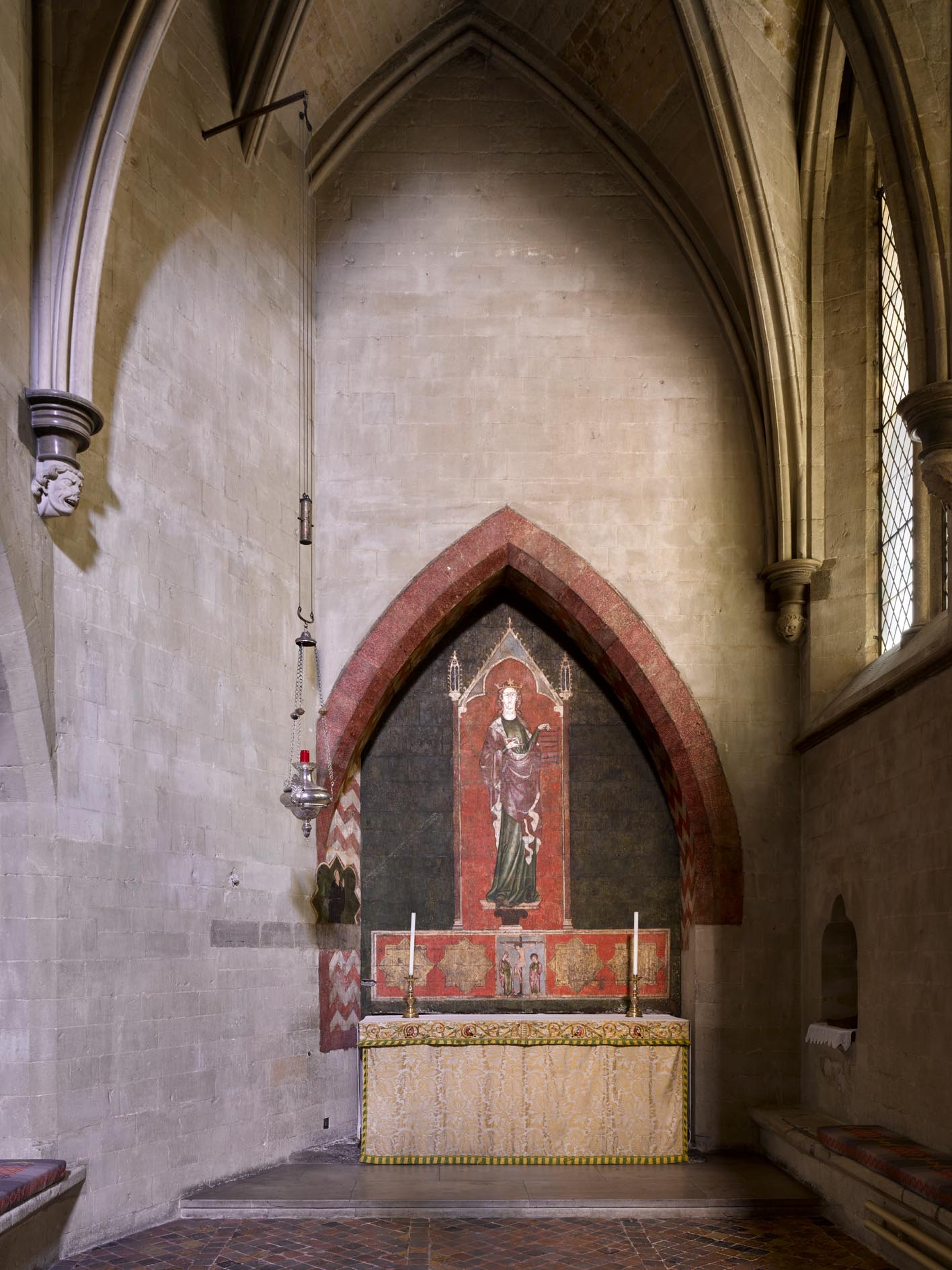
By 1269, work was sufficiently advanced for the church to be dedicated and the body of the Confessor translated back to its shrine behind the high altar. The ceremony again took place on October 13 in the presence of the King. By this date, it’s clear that the eastern arm, crossing, transepts and eastern end of the nave (Fig 5) stood structurally complete. There is less agreement among scholars, however, as to the degree to which the interior had been furnished by this date. It’s generally accepted that the surviving high altar retable of the Abbey was executed before this ceremony. Also, that work had begun some elements of the extraordinary mosaic or Cosmati work created by craftsmen from Rome to cover the floor and chief furnishings of the interior, including the surviving shrine of the Confessor (Fig 2). The overall effect would have been of a cool interior with colour and precious objects focusing the viewer’s attention on liturgically significant spaces. It is an aesthetic still preserved in one side chapel, St Faith’s (Fig 6).
When Henry III died three years later in 1272, his body was briefly laid to rest in the empty grave used for his patron in 1066, possibly because his magnificent tomb — the first in what would become an English royal mausoleum (Fig 4) — was unfinished. If so, the physical state of the monument echoed that of the church as a whole, which then comprised a huge Gothic east end awkwardly juxtaposed to the Confessor’s nave.
Incomplete as it was, however, Henry III had built upon the Confessor’s legacy at Westminster with far-reaching consequences. His patronage of the Abbey and palace brought together in one place the functions of government, coronation and royal burial. It was a unique conjunction in Europe — in France, by contrast, these functions were respectively divided between the Ile de la Cité in Paris, Reims and St Denis — and subsequent monarchs and the institution of Parliament have further built upon it, as we will discover in the article. That, in turn, serves to connect 21st-century Britain with the Confessor and Henry III. It also fundamentally explains why both the Palace of Westminster and Westminster Abbey still loom so large in our lives today.
Read part two of John's article: Westminster Abbey: History, power, tourism, and its status as ‘the single greatest and most eclectic museum of sculpture in the world’
This article was originally published in 2021. Visit www.westminster-abbey.org to find out more.
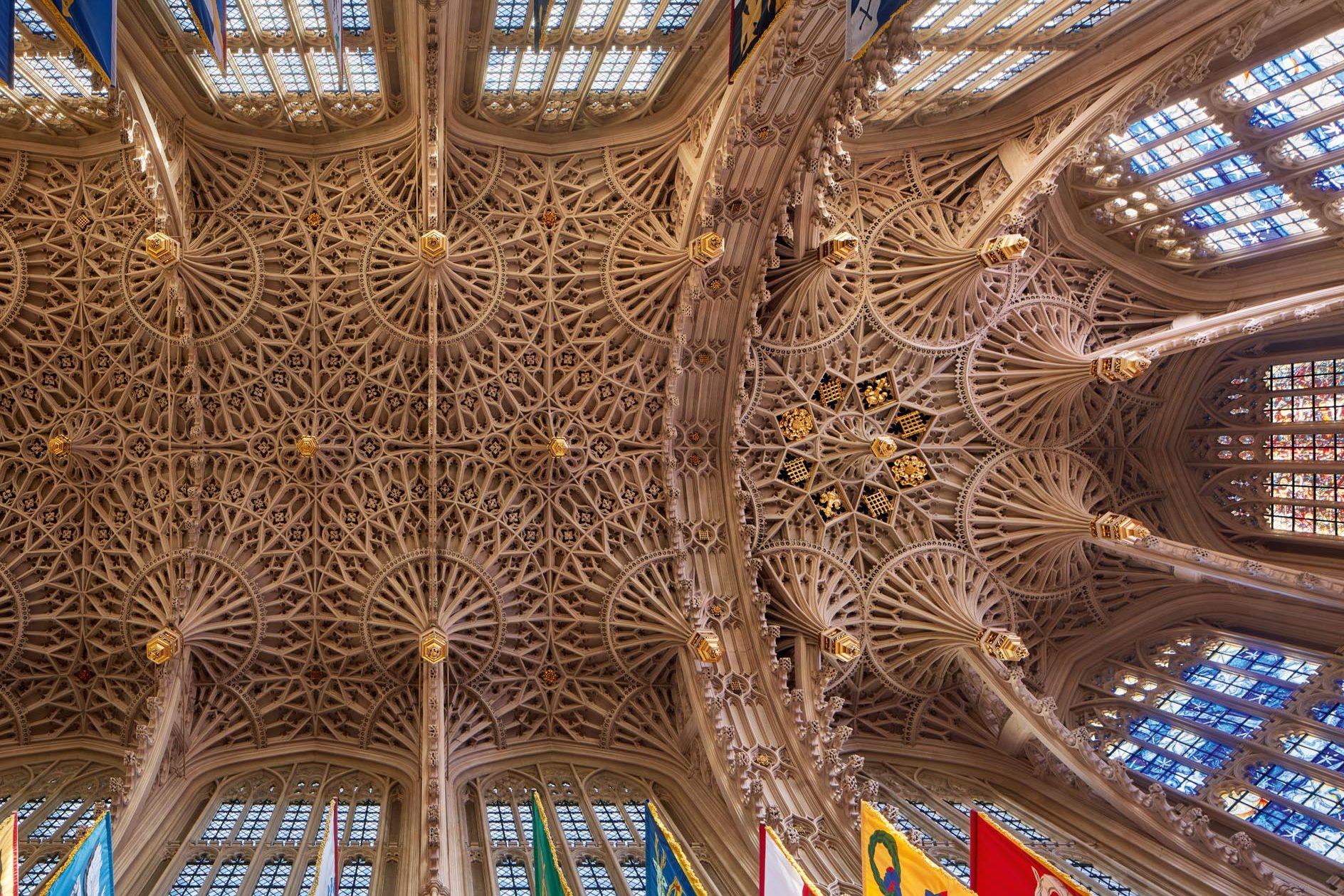
Westminster Abbey: History, power, tourism, and its status as 'the single greatest and most eclectic museum of sculpture in the world'
Westminster Abbey has been at the heart of national life since the Middle Ages. In the second of two articles,

The story of the Queen's Diamond Jubilee Galleries, Westminster Abbey's first major addition in 250 years
The architectural choices behind the recent additions to Westminster Abbey mark them out as a radical departure. John Goodall admires
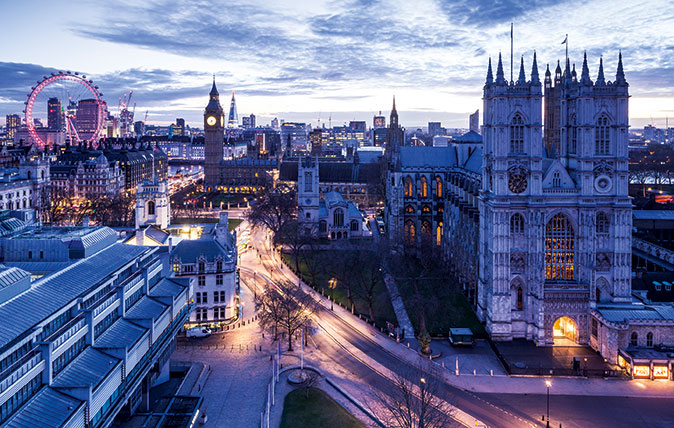
Credit: Getty
Six ways to fix Parliament Square – and make it the centrepiece London deserves

The State Funeral of Queen Elizabeth II: The tale of the final farewell to Her Majesty
Details and images of the funeral of Her Majesty Queen Elizabeth II on Monday 19th September, 2022.

John spent his childhood in Kenya, Germany, India and Yorkshire before joining Country Life in 2007, via the University of Durham. Known for his irrepressible love of castles and the Frozen soundtrack, and a laugh that lights up the lives of those around him, John also moonlights as a walking encyclopedia and is the author of several books.